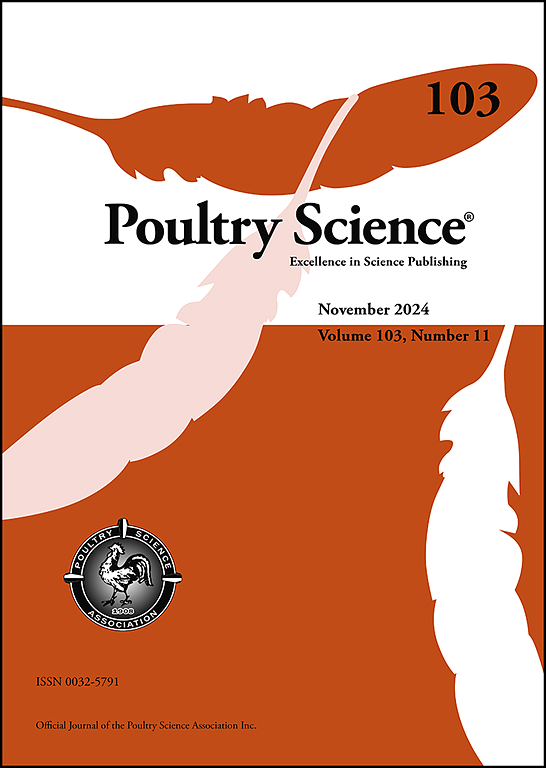LAYING RATE WAS CORRELATED WITH MICROBIAL Fecal microbiota transplantation improves the laying performance by changing the gut microbiota composition in late laying period
IF 3.8
1区 农林科学
Q1 AGRICULTURE, DAIRY & ANIMAL SCIENCE
引用次数: 0
Abstract
This research investigated the differences and succession patterns of microbes in different ages, the performance of laying hens, and the effect of Fecal Microbiota Transplantation (FMT) on aged laying hens. First, based on the different laying rates and age, we divided the laying hens into four groups: 75-week-old high-yield (OH, laying rate (LR) > 90%), 75-week-old low-yield (OL, LR < 60%), 75-week-old non-laying hens (OZ, LR = 0%) and 35-week-old high-yield (YH, LR > 90%) with 5 replicates in each group and 6 chickens in each replicate. The microbial metabolic patterns between different ages and laying rates were determined using 16S rDNA technology. Then, to verify the results of microbiome research, we utilized FMT technology to transplant the gut microbiota from OH to OZ (OZFMT-OH), thereby revealing the connection between gut microbes and production performance. The results showed that high-yielding hens (YH and OH groups) had higher levels of Superoxide dismutase (SOD) and Immunoglobulin A (IgA) compared to OL and OZ groups. The Villus height to Crypt depth ratio(V/C) was significantly higher in the YH group than in 75-week-old hens (P < 0.05). Alpha diversity indicated higher microbial diversity in the YH group compared to older hens (P < 0.05), with YH hens harboring more Megamonas, OH hens more Bacteroides, and OL and OZ groups showing higher levels of harmful bacteria. The villus height, V/C, mucosal layer thickness, cup cell number acetic acid level, and LR in the OZFMT-OH group were significantly higher than those in the OZ group (P < 0.05), while the IL-2 level, crypt depth and cecal intestinal wall thickness were significantly lower than those in OZ group (P < 0.05). FMT also changed the morphological structure of grade follicles and small yellow follicles, improved the microbe composition of cecum and increased Bacteroides abundance. In the late laying period, if the intestinal flora cannot maintain the dynamic balance and carry out timely replacement, the production performance may be decreased, and the increase of Bacteroides abundance in the intestinal tract can improve the intestinal health and production performance of laying hens in the late laying period.
求助全文
约1分钟内获得全文
求助全文
来源期刊

Poultry Science
农林科学-奶制品与动物科学
CiteScore
7.60
自引率
15.90%
发文量
0
审稿时长
94 days
期刊介绍:
First self-published in 1921, Poultry Science is an internationally renowned monthly journal, known as the authoritative source for a broad range of poultry information and high-caliber research. The journal plays a pivotal role in the dissemination of preeminent poultry-related knowledge across all disciplines. As of January 2020, Poultry Science will become an Open Access journal with no subscription charges, meaning authors who publish here can make their research immediately, permanently, and freely accessible worldwide while retaining copyright to their work. Papers submitted for publication after October 1, 2019 will be published as Open Access papers.
An international journal, Poultry Science publishes original papers, research notes, symposium papers, and reviews of basic science as applied to poultry. This authoritative source of poultry information is consistently ranked by ISI Impact Factor as one of the top 10 agriculture, dairy and animal science journals to deliver high-caliber research. Currently it is the highest-ranked (by Impact Factor and Eigenfactor) journal dedicated to publishing poultry research. Subject areas include breeding, genetics, education, production, management, environment, health, behavior, welfare, immunology, molecular biology, metabolism, nutrition, physiology, reproduction, processing, and products.
 求助内容:
求助内容: 应助结果提醒方式:
应助结果提醒方式:


